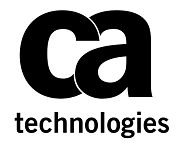Software Enables Innovation
By creating a Modern Software Factory within their IT department, agencies can make the most of what they have while innovating and modernizing.
Presented by
CA Technologies

“Software is driving innovation, and the IT teams that are winning today have essentially built software factories inside their organizations.”
As policymakers in Washington continue to debate information technology strategy, IT professionals in federal agencies need to be ready to put it all into place to better serve the agency’s objectives and the public interest. After all, public policy on technology is really about having the tools to deliver on IT priorities, turning ideas into results, and making abstract concepts a reality. This often means innovating at record speeds; but not necessarily with record funding.
As a result, agencies need to look at ways to use what they have in new ways—and the most important thing they have is information.
The trick is to leverage the right tools to make the most of that information. One way to do that is by adopting elements of what CA Technologies calls the Modern Software Factory. People drive innovation: The Federal IT professionals and the Information Technology Community that supports them. Today, this innovation is both accelerated and greatly enhanced by building a modern software factory within their enterprise.
There are four key components to the Modern Software Factory. The first is agility, or the ability to make use of agile approaches at scale. After all, the government has a customer base of 350 million people (domestically). That means not only adding agility to processes, but also having a platform that is transformative. This can help drive a cultural shift from the notion of “build to last” and toward “build to change.”
Another element is automation. Rapid, repeatable task completion saves time and money and accelerates the desired results. Agencies become more agile and responsive if they can incorporate elements of today’s workforce into the development process as they build out applications and conduct performance and systems tests, in preparation of delivering a solution to the ultimate user community.
The third component is maximum application performance and insight. This involves continuous monitoring to ensure you can make decisions and technical changes at a moment’s notice and with real information..
The fourth component is security. One doesn’t need to look any further than news reports about the latest breaches to know that security has to be a priority. Still, 68 percent of developers say they would put something new into production ahead of testing security. The Modern Software Factory incorporates security into the development process so this decision never has to be made by developers. Security is at the core of this process.
Clearly, building a Modern Software Factory takes work. Generally speaking, people don’t like change. It can damage the ego, or even hurt morale, especially when some find they are less in demand. Some may have to take time to learn new skills. Finally, risk always looms large when a new technology goes into production at scale.
So what do agencies stand to gain? With the Modern Software Factory approach, they can expect to see:
- Enhanced trust. As citizen engagement and confidence in government systems grow, so too will adoption.
- Better value and user experiences which provide real fiscal savings now.
- digital experiences that are on par with how citizens interact with the private sector.
- Speed, which is a necessity in the Digital Age.
- Reliability because services will always be available via any channel through which users seek to engage.
Implementing a Modern Software Factory clearly requires a change in thinking. It takes time to take root, but the goals are to shift toward agility, automation, and security while putting user experience first and bringing customers into the testing phases. Like the laws government passes, the systems and applications it builds have historically been built to last. Agencies need to think in terms of “built-to-change,” where IT is at the center and branches off to cultivate a shift in internal culture, evolving business processes and tools, and technologies that enable both. To meet missions and mandates, the entire ecosystem of government IT must rethink and refashion how government designs, builds, and delivers experiences for people.
At the heart of this is information—the new currency. The Modern Software Factory can help agencies make the most of their information assets to glean actionable and highly valued information. And that’s crucial because the information you collect today will inform the systems you build in the future.
This content is made possible by CA Technologies. The editorial staff of Government Executive was not involved in its preparation.
API management is a key CA solution to help agencies innovate and accelerate innovation in their Modern Software Factory. Read more here!
NEXT STORY: Making the Case for Leadership Development as an Imperative



